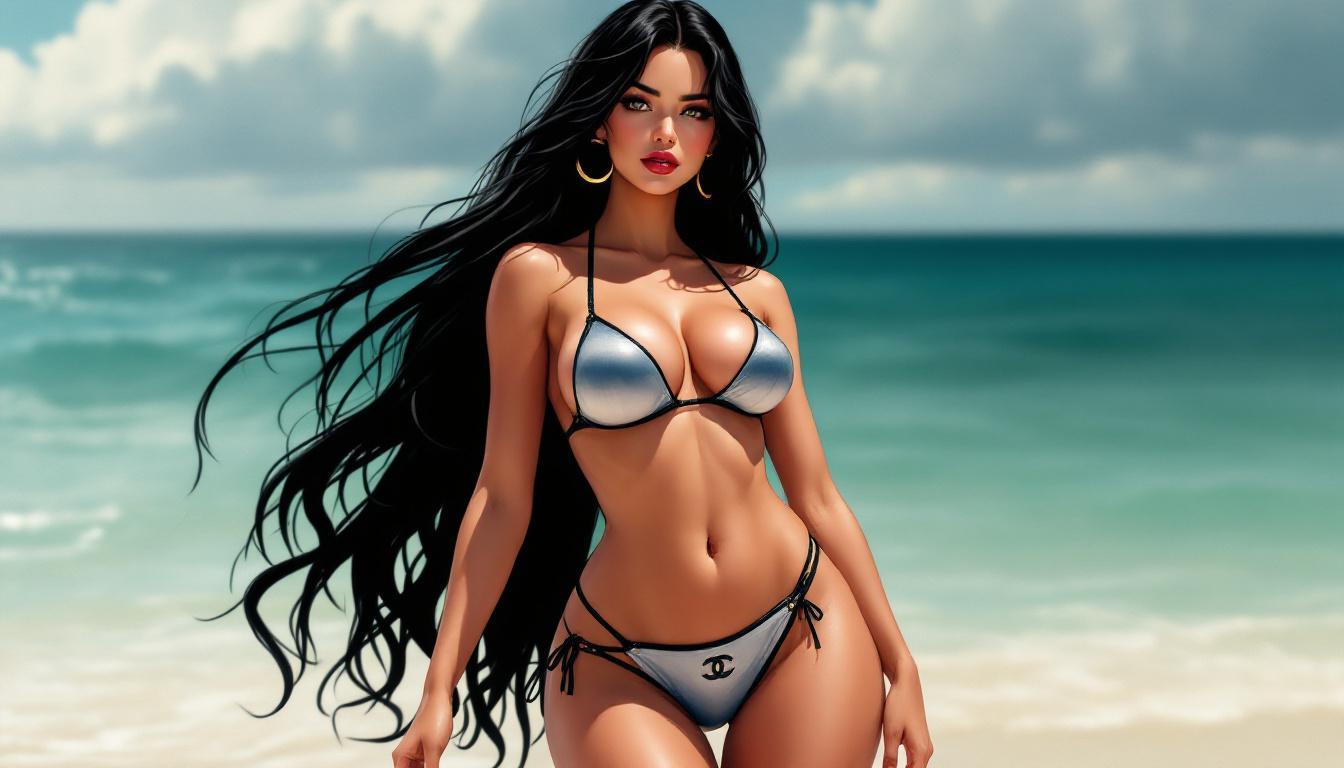Kylie Jenner's physique is not just any body; it is regarded as one of the most influential ideals of female beauty in contemporary culture. With high-hoisted breasts, a round, almost cartoonish bottom, and an impossibly slim waist, Jenner's form embodies a drastic evolution in beauty standards that has unfolded over the last few decades. This transformation in aesthetics can be traced through the lens of a recent Instagram post, where Jenner, clad in a £3,700 vintage Chanel bikini—originally worn by supermodel Claudia Schiffer in the 1990s—evokes nostalgia for a time when beauty ideals were markedly different.
The past thirty years have witnessed perhaps the most extreme shifts in female body representations. From the heroin chic of the late 1990s and the size 0 craze of the early 2000s, to the body positivity movements that gained momentum in the late 2010s, each era has contributed layers of complexity to how women perceive themselves and their bodies. Notably, the advent of accessible cosmetic procedures—from fillers and Botox to Brazilian butt lifts—has dramatically reshaped the landscape of beauty, offering women an array of options to refine or completely alter their physical appearances.
Reflecting on this evolution, many women who have navigated these shifting standards speak to the pressures of emulating the ideals set forth by celebrities like Jenner. As a magazine editor in the late 2010s, I initiated a conversation about these narrow confines of beauty by featuring size 24 model Tess Holliday on the cover of Cosmopolitan. The backlash was fierce, yet I believed that celebrating diverse body types was still possible. In contrast to that moment, the current climate appears more entrenched in a singular aesthetic, with Jenner's curvaceous body type emerging as a dominant benchmark.
Back in 1995, beauty ideals largely gravitated towards the girl-next-door images of Hollywood stars like Julia Roberts and Sandra Bullock, alongside the towering presence of supermodels such as Schiffer, Christy Turlington, and Naomi Campbell. These figures defined an era in which beauty was synonymous with slimness and sophistication but lacked the surgical enhancements that have now become so prevalent. Although whispers of procedures existed, they remained largely speculative; most transformations were a result of genetics or fleeting fashion trends.
As the 1990s gave way to the early 2000s, a new paradigm emerged. Kate Moss introduced a slender, androgynous ideal that was markedly different from the athletic frames of her predecessors. Simultaneously, the late 1990s saw a resurgence of healthier models like Heidi Klum, whose curvaceous forms began to reframe societal expectations of femininity. This shift paralleled a growing acceptance of exercise and fitness, embodied by icons such as Madonna and Demi Moore, who revolutionised body image through their muscular physiques.
The seismic shift in beauty standards accelerated dramatically in 2002 with Botox's FDA approval, which allowed for non-invasive cosmetic enhancements to become mainstream. What once was a transgressive act of vanity became an everyday option for many women, reshaping their self-perception and their desire to meet these evolving standards. While stars like Nicole Kidman and Renée Zellweger made public appearances with visibly altered features, the rapid rise in accessibility of cosmetic procedures led to the phenomena of 'tweakments.' Prices plummeted, and what was once a luxury became desirable and even socially acceptable.
The explosion of social media further transformed beauty standards, fostering a culture of vanity that encouraged users to curate their own images. Platforms like Instagram and Snapchat facilitated a new era where beauty could be manufactured through filters, and the ideal became increasingly stylised, drawing on elements of cartoonish exaggeration. Women, often young and impressionable, pursued extreme looks in a quest to replicate their filtered selves, often without contemplating the emotional consequences of such choices.
Kylie Jenner and her family epitomise this new aesthetic—a blend of hyper-femininity and caricature that seems to control the male gaze in an unprecedented way. Paradoxically, while women like Jenner assert that they are choosing to be objectified, one must question whether this empowerment is genuinely progressive or merely a narrative crafted to deflect criticism from older generations who question the depths of such choices.
The disparity between the ideals of beauty perpetuated by figures like Schiffer and those represented by Jenner underscores the relentless pursuit of unattainable standards. For many young women today, the challenges of achieving the current beauty ideal remain insurmountable. As social media amplifies these standards, the struggle to attain them is akin to the hardships we faced in the 1990s—an incessant cycle wherein the average young woman feels perpetually inadequate in relation to her beauty idols.
The question lingers: as beauty ideals continue to shift towards ever-more unattainable forms, will the narrative of empowerment through choice truly resonate, or will it act merely as a facade in a world where the ideal body shape appears just as elusive as before?
Reference Map:
- Paragraph 1 – [1], [2]
- Paragraph 2 – [1], [3], [5]
- Paragraph 3 – [4], [6]
- Paragraph 4 – [7]
- Paragraph 5 – [1], [2], [5]
- Paragraph 6 – [1], [2]
- Paragraph 7 – [2], [3]
- Paragraph 8 – [1], [2]
- Paragraph 9 – [1], [5]
Source: Noah Wire Services
